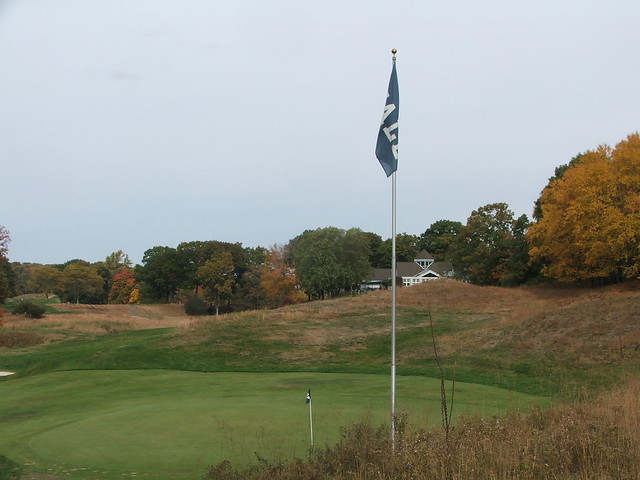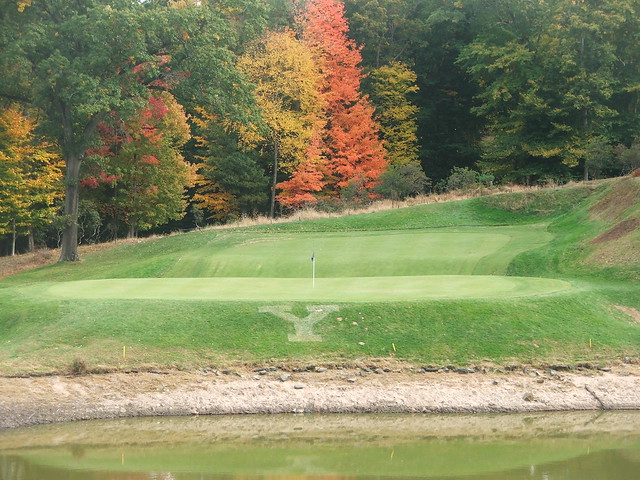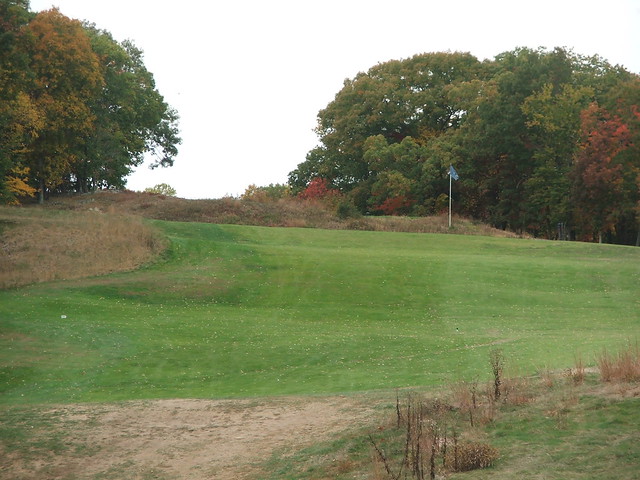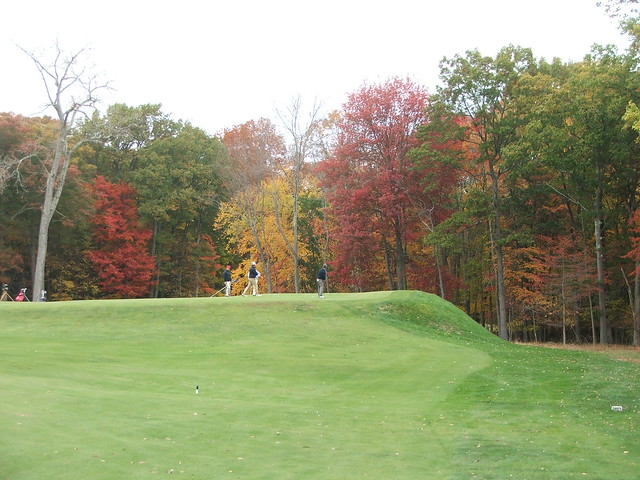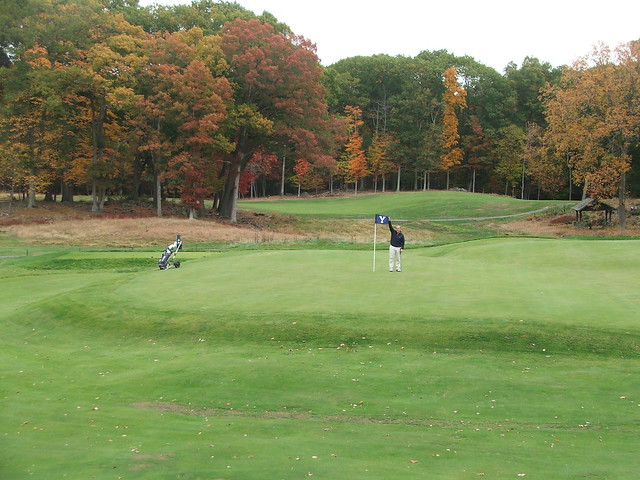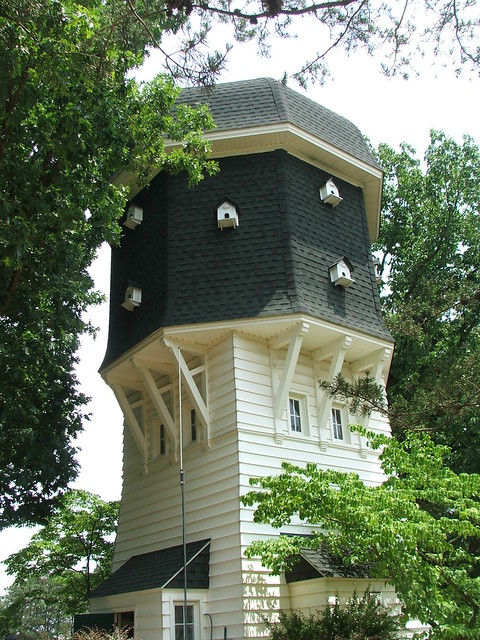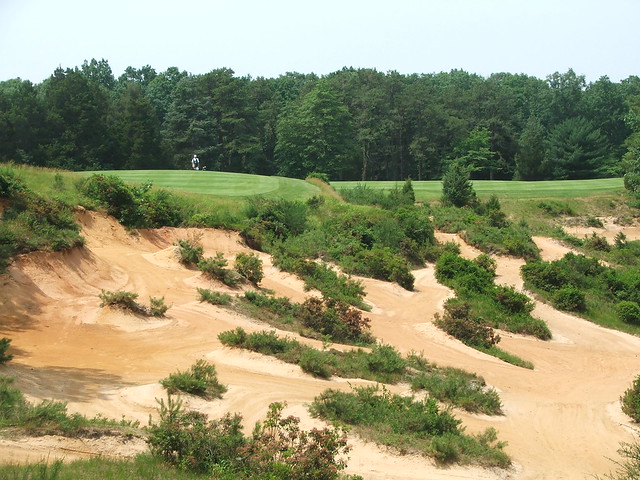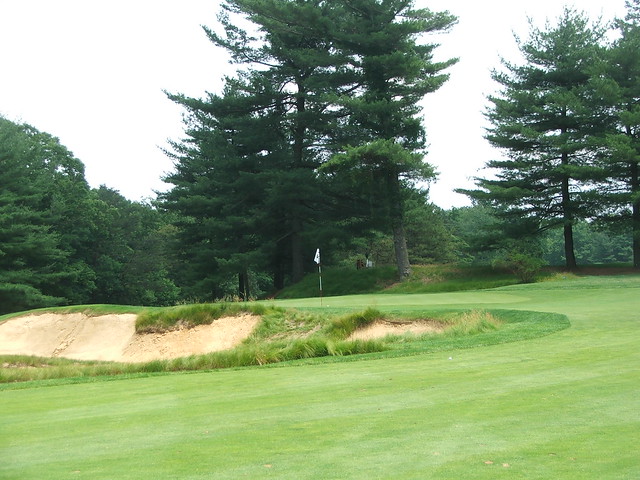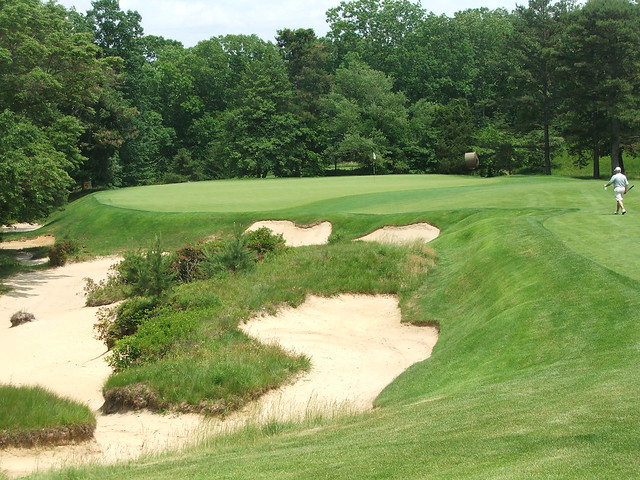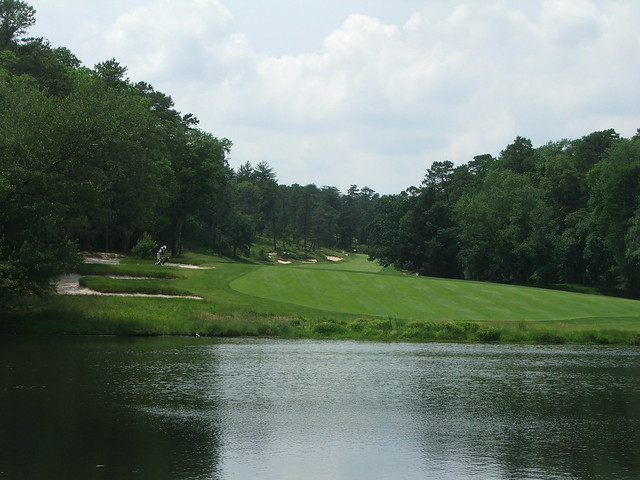Good news, my forthcoming book has a scheduled date this spring.
Unlike Westward Ho! in England where the exclamation point is a proper part of the course title, the exclamation point after the Yale in the title of the post is all mine; and indicative of strong feelings and the proper emphasis that the course requires. Originally named the Ray Tompkins Memorial Yale Golf Course after a wealthy Yale alumnus who donated the land the course now occupies, today it is known as the Course at Yale.
Having tangentially heard and read about Yale over the years, it sounded like a good course, although not one worth going out of your way for. Being a Princeton man, there was no logical way to get a connection to a Yalie to access the course so I put it low on my priority list. Descriptions of the course always had a qualifier: best course in Connecticut; best collegiate course. As we say in New Jersey: Marone. Yale doesn't need any qualifiers, it is one of the best golf courses I have ever played, in or out of Connecticut or collegiate golf. It is a devastating good golf course.
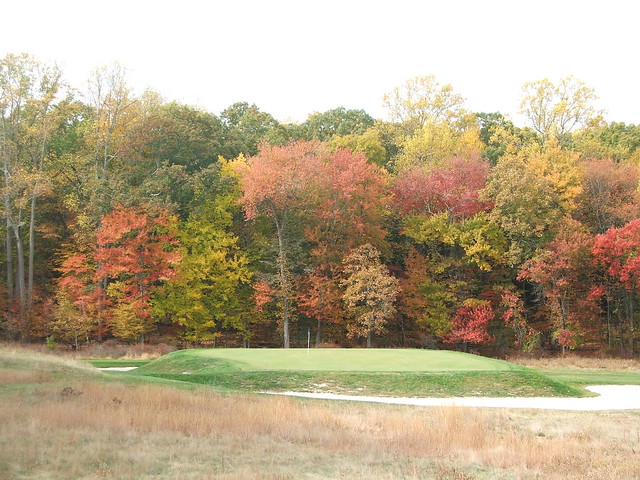
You know are you at a special place to play golf when the course has a hole like this. The 5th "Short" hole at Yale. Breathtaking.
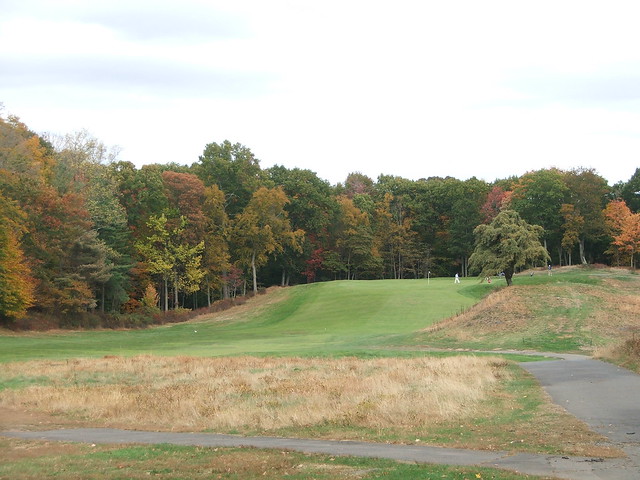
The 7th hole "Lane" sweeps up the hill to another challenging green
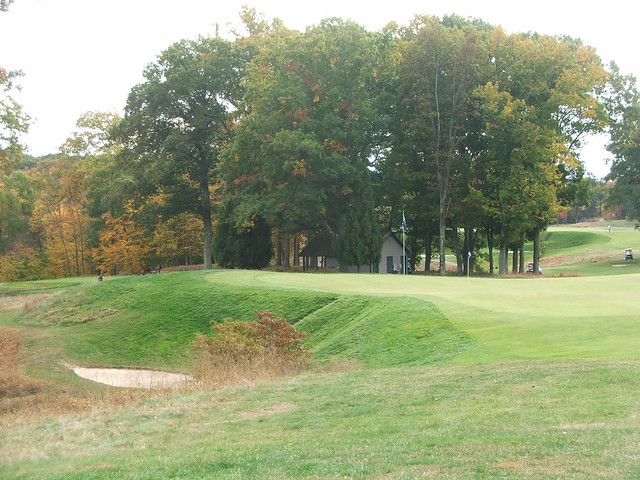
The "Cape" 8th hole around the green. The tee shot is another one on the course where you are unlikely to see your tee shot land as you are blocked out by one of the immense hills
The often-highlighted 9th hole at Yale, designed with a Biarritz-style green on a titanic scale
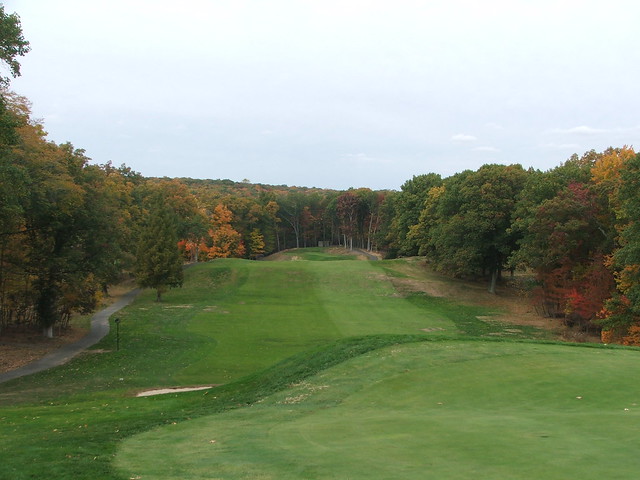
The tenth hole looking backward from the green shows off the rugged terrain at Yale. The tee shot is blind, thus, like at the third, you ring another bell when you are clear of the group behind you
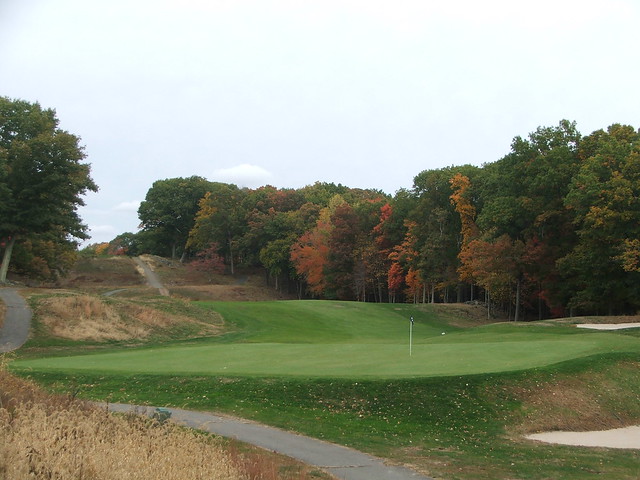
The 11th hole also shows how perfectly Macdonald and Raynor used the land--with artistry--to route their holes
The 12th hole, Alps, is a worthy rendition of the famous original at Prestwick as you play straight up a hill to a hidden green. Walking the front nine at Yale is challenging, walking the back is twice as challenging since the elevation changes are steep.
The Redan hole is also on a massive scale. The original Redan at North Berwick plays 192 yards. The Yale version, the 13th, is 196 yards, although from the championship tee it plays 212. The original Redan plays from flat ground to the well-known and challenging green. The version here plays from an elevated tee. It is a bigger and more muscular hole than the original, and a pure delight to play.
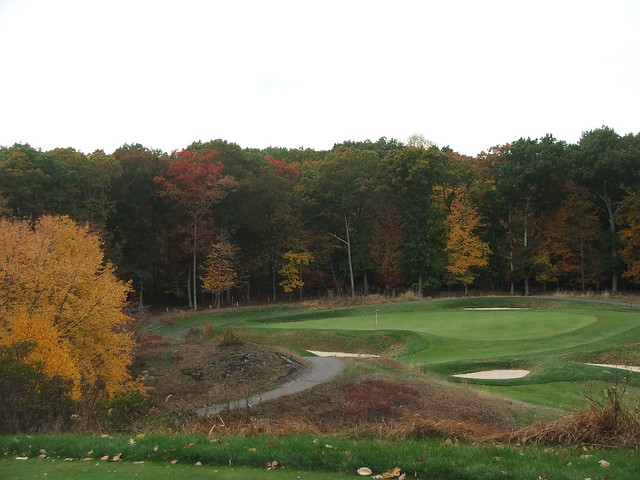
A fantastic rendition of a Redan hole, the 13th at Yale
The table top green of the par-4 14th "Knoll" hole
The dearth of bunkers on the 17th "Nose" hole creates an interesting challenge
Unlike Westward Ho! in England where the exclamation point is a proper part of the course title, the exclamation point after the Yale in the title of the post is all mine; and indicative of strong feelings and the proper emphasis that the course requires. Originally named the Ray Tompkins Memorial Yale Golf Course after a wealthy Yale alumnus who donated the land the course now occupies, today it is known as the Course at Yale.
The bulldog is an appropriate mascot for Yale and its golf course, as you need to be one to walk the challenging terrain the course is built on
Charles Blair MacDonald served as the course design consultant at Yale, although Seth Raynor was the actual architect of the course. MacDonald describes the land at Yale as, "high, heavily wooded, hilly...no part of it had been cultivated for over forty years...It was a veritable wilderness when given to Yale." Although Raynor was the architect, the day-to-day construction of the course was left to Charles "Steam Shovel" Banks. There is ongoing debate about whether to attribute the course design to MacDonald or Raynor, although for my purpose it doesn't matter. What matters is that the classic triumvirate of MacDonald-Raynor-Banks had a hand in the course with all their wonderful prototype holes.
In his original Confidential Guide Tom Doak mentions that the course was notoriously in bad condition, and therefore probably didn't rate as high as it could. I'm sure he's right, although the course was in quite good condition when I played. Like your author, the course is not pristine or manicured, is a bit rough in spots, but overall is in quite good condition.
Yale points out a glaring issue with golf course magazine ratings. They are opinions and subject to the vagaries of the raters. The fact that the course is not better ranked relative to its peers is a big miss. The critics will complain: too many blind shots; its too short (as a par 70 it's actually not); the conditioning isn't perfect, therefore the course is not worthy to be rated among the best. Humbug. Balderdash. Like anything subjective such as fashion or restaurants, there are trends. Things are in vogue; they are out of vogue. The new sexy courses that are marketed and entice raters with a free round of golf and a free lunch rise in the ranks. Perfect conditioning and waterfalls are in; old school is out. The result is that courses like Yale fade to the background, which in some sense is a shame. On the other hand, it is a blessing in disguise. I played Yale on a Saturday morning and there were only a couple of dozen people there. The feel of the clubhouse and course is understated, a little shabby chic. Flying under the radar seems just fine to the folks at old Eli.
Welcome to Yale. The first green sets the tone and lets you know that convention will not be the order of the day with your flat stick
The third hole "Blind" contains the first of many blind shots you will hit at Yale, this one features blind shots on both the tee shot and the approach

You know are you at a special place to play golf when the course has a hole like this. The 5th "Short" hole at Yale. Breathtaking.

The 7th hole "Lane" sweeps up the hill to another challenging green
My playing partners and I had immense difficulty putting at Yale. The greens were in fine condition, but we almost never read the breaks correctly. Perhaps we're just crappy putters? Or more likely it is a mountain course and we kept missing the fact that the greens break predominantly down from a high point on the property that we could not determine? Or, perhaps the subtlety of the MacDonald-Raynor design?

The "Cape" 8th hole around the green. The tee shot is another one on the course where you are unlikely to see your tee shot land as you are blocked out by one of the immense hills
Several of the holes at Yale are prototype holes on steroids. The 9th Biarritz is surely one. The scale of the hole is mammoth from beginning to end. The 213-yard hole has a long forced carry from an elevated tee and is over water. The size of the green front to back is irrationally long and there is five-foot deep trench that runs through the middle of it. Yikes.
The often-highlighted 9th hole at Yale, designed with a Biarritz-style green on a titanic scale
In Scotland's Gift Macdonald describes how "of the 102 acres cleared twenty-eight were swamps, forty-three stone ledges, and the cleared land was full of rock...Practically 75 percent of the cleared area was ledge and swamp." Nowhere is this more apparent than when the golfer begins the back nine, where the topography is nothing less than stunning, beginning with the tenth hole, "Carries," a 382-yard par four that plays up a large hill to an elevated green, with rocky outcropping omnipresent. Banks called the green "complex and slippery" and he was not wrong. He felt the hole has a strong resemblance to the 9th at Shinnecock Hills.

The tenth hole looking backward from the green shows off the rugged terrain at Yale. The tee shot is blind, thus, like at the third, you ring another bell when you are clear of the group behind you
In a charming twist reminiscent of Prestwick or National Golf Links you get to ring a bell to let golfers behind you know your position. There are so many bells ringing out on the course, at times if feels like you are near a church that rings its bells every fifteen minutes.

The 11th hole also shows how perfectly Macdonald and Raynor used the land--with artistry--to route their holes
The 12th hole, Alps, is a worthy rendition of the famous original at Prestwick as you play straight up a hill to a hidden green. Walking the front nine at Yale is challenging, walking the back is twice as challenging since the elevation changes are steep.
The Alps hole, the 12th at Yale, keeps going, and going and going. Uphill all the way to a blind green.
The Redan hole is also on a massive scale. The original Redan at North Berwick plays 192 yards. The Yale version, the 13th, is 196 yards, although from the championship tee it plays 212. The original Redan plays from flat ground to the well-known and challenging green. The version here plays from an elevated tee. It is a bigger and more muscular hole than the original, and a pure delight to play.

A fantastic rendition of a Redan hole, the 13th at Yale
The short 14th hole at Yale is a par four of 365-yards from the championship tee:
The table top green of the par-4 14th "Knoll" hole
I enjoyed the 17th hole quite a bit, named "Nose," it is a 425-yard par four. Your tee shot must carry water and you navigate over a large wall of a hill that is all you can see from the tee. The hole and the green are sparsely bunkered and they don't need to be. It is a case study of using land forms as proper and challenging hazards. Elevating the green creates a severe penalty for missing.
The dearth of bunkers on the 17th "Nose" hole creates an interesting challenge
I liked all the holes at Yale and it is hard to pick a favorite. The best known hole is clearly the Biarritz ninth, with its legendary carry over water to a seriously challenging green. I expected this to be the hole that shined through and the one that would be the most memorable, however, I find myself thinking back about the "Blind" third hole with very fond memories, although I think the three hole stretch from ten through twelve is difficult to beat. If I had to single out one hole, though, it would be the fourteenth "Knoll," which plays only 353 yards from the blue tees. You likely won't see your tee ball land given the hilly terrain. Charles Banks described your second shot on this hole as a "lift and hold shot. The green is elevated on all sides and slopes to the left." As Godley and Kelly point out in Golf at Yale it is a "deceptively compact par-four, made challenging by its tilts, angles, and uneven lies." And, I would add by the narrow nature of the green and your intended target.
The finishing hole is a doozy. A par five of 621 yards from the tips, it plays over a crazy combination of hills. Especially for the first time player, there is little sense of where to hit and what would constitute a good golf shot. The terrain is monumental and it appears to not have been sculpted at all, just the original crazy and jumbled land forms. To say that you have to hit your tee shot uphill understates the case. Likewise, the shot down from the high ground encompasses a precipitous fall. It is made all the more interesting by having two distinct fairways you can play. You can go to the right and across the top of the mountain or to a lower plateau on its right. The humps and bumps make it quite unpredictable where your ball will kick unexpectedly. I suppose this is why some don't rate the course as high as it deserves to be. People want fairness in golf today, although this is not really the essence of the game. Bad bounces are part of the deal and the unpredictability of bounces on the course is part of the charm, just the way it is with links golf in the British Isles. There are literally an infinite number of ways and combinations to play this excellent hole.
What a great finishing hole, I personally put it just behind Pebble Beach's 18th as one of the great finishing holes in the game. Too bad the weather turned cloudy and I couldn't get any good pictures.
What a great finishing hole, I personally put it just behind Pebble Beach's 18th as one of the great finishing holes in the game. Too bad the weather turned cloudy and I couldn't get any good pictures.
As you can see I played the course on the perfect fall Saturday with peak seasonal color. The temperature was comfortable and crisp. When the winds shifted you could vaguely hear the band playing occasionally from the nearby Yale Bowl. The leaves were rustling, bells were ringing and there were periods of absolute silence. Is there a better place to play than in a quaint New England collegiate town on an invigorating autumn day? C. B. Macdonald wrote, "To-day there is no better test of golf than the Yale course anywhere, and as years go by it will become more attractive." And it has.
The Course at Yale is private, although you can be introduced as an unaccompanied guest by someone affiliated with the University, including students, faculty or alumni. All they have to do is call the pro shop and grant permission for you to play. If you appreciate classic golf courses I suggest doing so and savor the experience.
For details on all the methods you can use to gain access to the world's best courses, you can pre-order on Amazon:
For details on all the methods you can use to gain access to the world's best courses, you can pre-order on Amazon:



